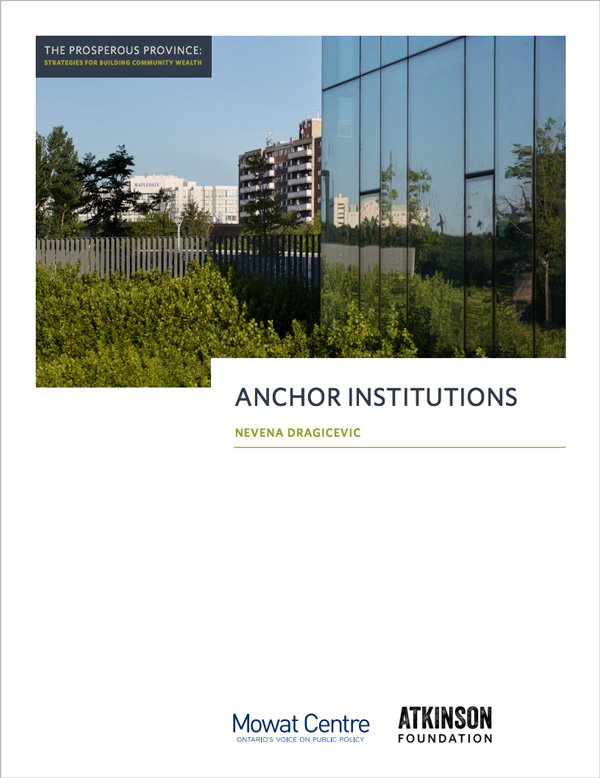August 24, 2015
This report looks at the current landscape and economic potential of Anchor strategies in Ontario, and analyzes five key issue areas related to their development in the province.
This is not the reality, however, for a sizeable minority of Ontarians who are disproportionately young, new to Canada, and from racialized communities. Access to opportunity and wealth is far from equitable. Youth unemployment in Toronto is nearly three times the average regional rate. Jobs are increasingly precarious, while the housing market has been designated as “severely unaffordable.” If nothing changes, the share of low and very low-income neighbourhoods in the city is expected to climb to 60 per cent by 2025.
Ontario and Toronto are not exceptions. In most parts of the world, income inequality is growing, while access to opportunity is shrinking. Ongoing and significant changes in the structure of the Ontario, Canadian and global economies mean that more people are falling behind even as global wealth increases.
Community wealth building is an encouraging response to this situation. This approach builds local assets and leverages them to create a greater supply of decent work and other economic opportunities.
Continue Reading
An anchor mission is the deliberate and strategic use of resources to benefit communities, especially low- and moderate-income neighbourhoods or historically disadvantaged groups. It is the conscious anchoring of capital, jobs and other opportunities locally. When pursued in tandem with their core missions (e.g. education, health care), anchor institutions have the potential to make their communities stronger by every measure.
This report is timely for a number of reasons. At a time of increased public debt and renewed promises to tackle poverty in Ontario, anchor strategies offer an opportunity to leverage existing public funds and assets to address these ambitious objectives.
This research also supports anchor institutions in the Toronto Region and across Ontario that are considering the community wealth building approach, as well as of those already grappling with challenges arising from their new institutional efforts. Given the number of successful anchor strategies that have emerged in the U.S. over the last decade, the time is right to examine best practices and apply lessons learned to Ontario.
This paper begins by offering a more detailed explanation of anchor institutions and strategies (‘anchor mission’ and ‘anchor strategies’ are used interchangeably throughout the report), followed by examples of well-established anchor missions in the U.S. It then looks at the current landscape and economic potential of anchor strategies in Ontario and analyzes five key issue areas and enabling strategies to overcome challenges. The conclusion describes next steps in anchor strategy development in the Toronto Region and Ontario.
While anchors can deploy different community wealth building tactics, much of this paper is focused on the issues and opportunities associated with how and where institutions spend their money. In Ontario, universities and hospitals alone spend $9.9 billion procuring goods and services annually. Given this scale of spending, it is evident procurement is among the most important levers anchors have to advance community wealth.
Additionally, though communities, social purpose organizations, advocacy groups, foundations, research institutes, private businesses and others all have important roles to play in anchor strategy development, much of the initiative and groundwork must necessarily come from the anchors themselves. For this reason, the report focuses on challenges and opportunities facing anchor institutions.








